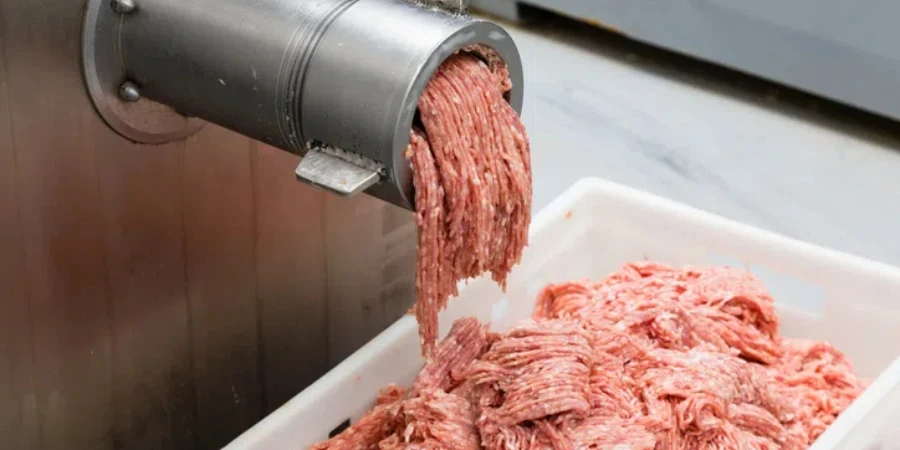Selecting the right commercial meat grinder is crucial for businesses aiming to enhance their meat processing operations. With the global market for these grinders projected to grow significantly, understanding the key factors such as power source, types, sizes, and technical specifications is essential. This article provides an in-depth analysis to assist professional buyers in making informed decisions, ensuring improved productivity and product quality.
Table of Contents:
– Market Overview: Commercial Meat Grinders
– Detailed Market Analysis: Commercial Meat Grinders
– Key Factors When Selecting a Commercial Meat Grinder
– Innovative Features in Modern Commercial Meat Grinders
– Regulatory Compliance and Certifications
– Conclusion
Market Overview: Commercial Meat Grinders

The global market for commercial meat grinders is set to grow significantly. In 2024, the market size was estimated at USD 1.2 billion, and it is expected to reach USD 1.6 billion by 2029, growing at a CAGR of 5.8%. This growth is driven by the increasing demand for processed meat products, advancements in meat processing technology, and the expansion of the food service industry. The meat and poultry processing equipment market, which includes commercial meat grinders, was worth USD 9.71 billion in 2024 and is expected to reach USD 17.55 billion by 2030, growing at a CAGR of 10.29%.
North America and Europe are the largest markets for commercial meat grinders, due to high meat consumption, stringent food safety regulations, and a well-established food processing industry. The Asia-Pacific region is expected to witness the highest growth rate, driven by rising disposable incomes, urbanization, and an increasing preference for processed meat products. Key players in the market include Electrolux AB, Hobart, ITW Food Equipment Group LLC-Berkel, and Robot Coupe.
Market dynamics are influenced by the rising demand for high-quality meat products, technological advancements in meat processing equipment, and the growing trend of automation in the food processing industry. Additionally, the increasing popularity of plant-based meat alternatives and the adoption of sustainable practices in meat processing are expected to shape the market’s future.
Detailed Market Analysis: Commercial Meat Grinders
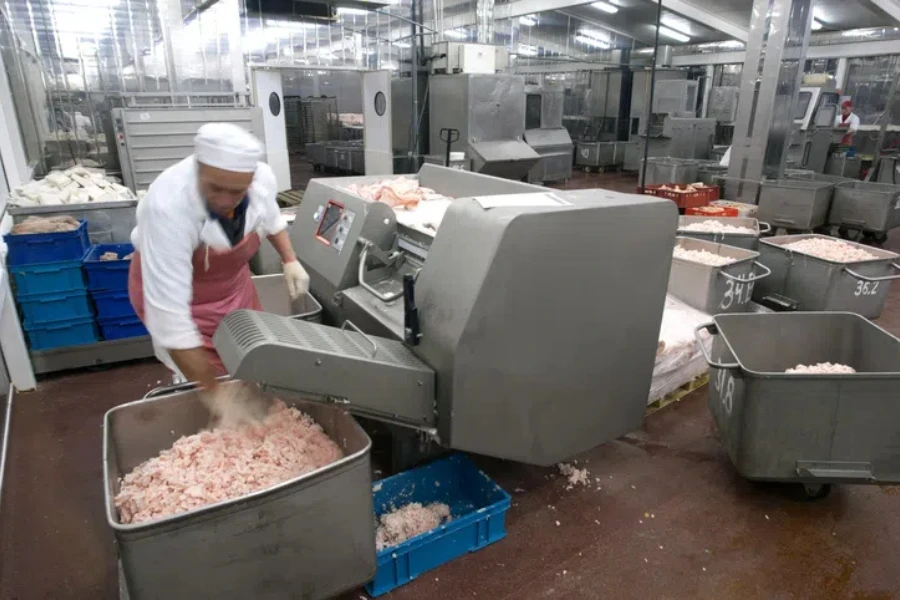
Commercial meat grinders are essential in the food processing industry, used for grinding meat into fine particles for products like sausages, patties, and meatballs. The market is highly competitive, with numerous players offering a range of products to meet different customer needs. Key performance benchmarks for commercial meat grinders include grinding capacity, motor power, durability, and ease of maintenance.
Electrolux AB and Hobart are the leading players, holding about 35% of the market. These companies have a strong presence in North America and Europe and are known for their innovative products and excellent customer support. Other notable players include ITW Food Equipment Group LLC-Berkel and Robot Coupe, which have significant market presence in the Asia-Pacific region.
Economic factors like rising meat prices and fluctuations in raw material costs impact the market. However, the increasing demand for processed meat products, driven by changing consumer preferences and the growth of the food service industry, helps balance these challenges. Consumer behavior shifts towards convenience and ready-to-eat meat products have led to a surge in demand for commercial meat grinders.
Distribution channel preferences vary by region. In North America and Europe, specialty retail stores and online platforms are the most popular channels. In contrast, the Asia-Pacific region prefers direct sales and partnerships with food processing companies. Recent innovations include energy-efficient grinders, IoT integration for real-time monitoring, and the use of high-quality stainless steel for better durability.
The product lifecycle stages for commercial meat grinders include introduction, growth, maturity, and decline. The current market is in the growth stage, with increasing demand and continuous product innovation. Digitalization and automation are key trends, with companies investing in advanced technologies to improve efficiency and reduce operational costs.
Social trends like the rising popularity of plant-based meat alternatives and increasing awareness of food safety and hygiene are influencing the market. Customer pain points include the high cost of equipment, maintenance requirements, and the need to comply with stringent food safety regulations. To address these challenges, companies are offering cost-effective solutions, comprehensive after-sales support, and ensuring compliance with international standards.
Brand positioning strategies focus on product quality, innovation, and customer support. Differentiation strategies include offering customized solutions, incorporating advanced technologies, and focusing on sustainability. Niche markets such as organic meat processing and small-scale food processors present significant growth opportunities for companies in the commercial meat grinder market.
Key Factors When Selecting a Commercial Meat Grinder
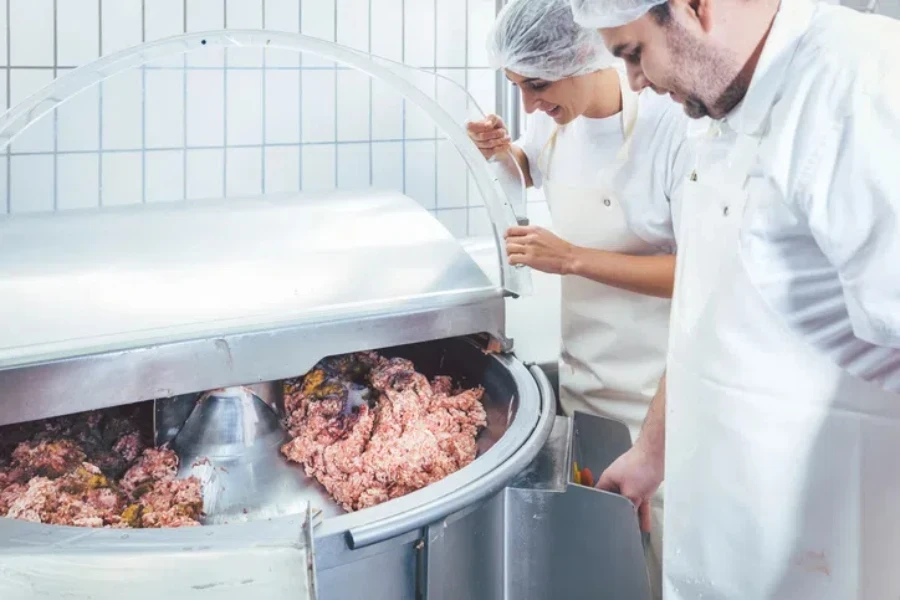
Choosing the right commercial meat grinder for your establishment is crucial for efficiency, productivity, and product quality. Here are the key factors to consider:
Power Source
The power source of a meat grinder significantly impacts its performance and suitability for different types of operations.
Manual Meat Grinders
Manual meat grinders are best suited for low-volume operations. They require physical effort to crank, making them less ideal for high-demand settings. Often mounted on a table or countertop, they are typically used in smaller establishments like boutique delis or small restaurants where grinding is infrequent. Manual grinders are portable and cost-effective as they do not require electricity. However, they are not suitable for establishments that need continuous or high-volume meat grinding due to the physical effort required.
Electric Meat Grinders
Electric meat grinders are more common in commercial settings due to their efficiency and ease of use. They come in various sizes, from small countertop models to large, floor-mounted units capable of processing hundreds of pounds of meat per hour. When selecting an electric meat grinder, consider the motor power, typically measured in horsepower (hp). A higher horsepower rating means the grinder can handle larger volumes of meat more efficiently. For example, a 1 hp grinder can process up to 260 pounds of meat per hour, making it suitable for busy butcher shops or restaurants.
Types of Meat Grinders
Different types of meat grinders cater to various production needs and operational scales.
Light-Duty Meat Grinders
Light-duty meat grinders are designed for low-volume applications. They are compact, affordable, and ideal for small delis, catering businesses, or restaurants that grind meat occasionally. These grinders are perfect for establishments with limited space and lower meat processing needs. Light-duty grinders are not suitable for continuous use and may not withstand the demands of larger operations. However, they are cost-effective for businesses with minimal meat grinding requirements.
Medium-Duty Meat Grinders
Medium-duty meat grinders are built for moderate use, making them suitable for butcher shops, restaurants, and grocery stores with higher meat processing needs. These grinders are more robust and can handle larger quantities of meat at faster rates compared to light-duty models. Medium-duty grinders feature more powerful motors and durable components, ensuring they can withstand frequent use. They offer a balance between performance and cost, making them a versatile choice for many commercial kitchens.
Heavy-Duty Meat Grinders
Heavy-duty meat grinders are designed for high-volume commercial settings such as large butcher shops, meat processing facilities, or industrial kitchens. These grinders are built with powerful motors and durable materials to handle continuous and heavy-duty grinding tasks. Heavy-duty grinders can process large quantities of meat quickly and efficiently without overheating or slowing down. They are essential for establishments that require consistent, high-output meat grinding capabilities.
Meat Grinder Sizes
The size of a meat grinder is determined by the diameter of the grinding plates, commonly categorized as #12, #22, and #32.
#12 Meat Grinders
#12 meat grinders are suitable for small to medium-sized operations. They are compact and can handle moderate volumes of meat, making them ideal for small butcher shops or restaurants. These grinders offer a good balance between size and capacity, making them a popular choice for many businesses.
#22 Meat Grinders
#22 meat grinders are larger and more powerful than #12 models. They can process greater volumes of meat at a faster rate, making them suitable for medium to large operations. These grinders are commonly used in busy butcher shops, restaurants, and meat processing facilities.
#32 Meat Grinders
#32 meat grinders are the largest and most powerful, capable of handling high volumes of meat continuously. They are designed for industrial use and are ideal for large butcher shops or meat processing plants. These grinders offer maximum efficiency and durability, making them essential for high-demand environments.
Technical Specifications
When selecting a commercial meat grinder, pay attention to the following technical specifications:
Motor Power
Motor power, measured in horsepower (hp), determines the grinder’s capacity and efficiency. A higher horsepower motor can handle larger volumes of meat and operate more efficiently under heavy loads. For example, a 1.5 hp motor can process up to 540 pounds of meat per hour, making it suitable for high-demand settings.
Construction Materials
The construction materials of a meat grinder impact its durability and ease of maintenance. Stainless steel is commonly used due to its resistance to corrosion, ease of cleaning, and durability. Stainless steel components can withstand frequent use and are dishwasher safe, making them ideal for commercial kitchens.
Safety Features
Safety features are crucial in commercial meat grinders to prevent accidents and ensure safe operation. Look for grinders with safety interlocks, non-slip feet, and protective guards around the blades. These features help minimize the risk of injuries and ensure safe operation in busy kitchen environments.
Ease of Use and Maintenance
The ease of use and maintenance of a meat grinder can significantly impact its efficiency and longevity.
User-Friendly Design
A user-friendly design with intuitive controls and easy assembly/disassembly can enhance the efficiency of meat grinding operations. Look for grinders with simple, straightforward controls and easy-to-remove components for cleaning and maintenance.
Cleaning and Sanitation
Regular cleaning and sanitation are essential to maintain food safety standards and ensure the longevity of the meat grinder. Stainless steel components are easier to clean and sanitize, reducing the risk of contamination. Some grinders come with dishwasher-safe parts, making cleaning more convenient.
Lubrication and Maintenance
Proper lubrication and maintenance are crucial to keep the meat grinder operating smoothly. Use food-grade lubricants to maintain and protect moving parts. Regularly check and replace worn-out components, such as blades and grinding plates, to ensure optimal performance and prevent breakdowns.
Innovative Features in Modern Commercial Meat Grinders
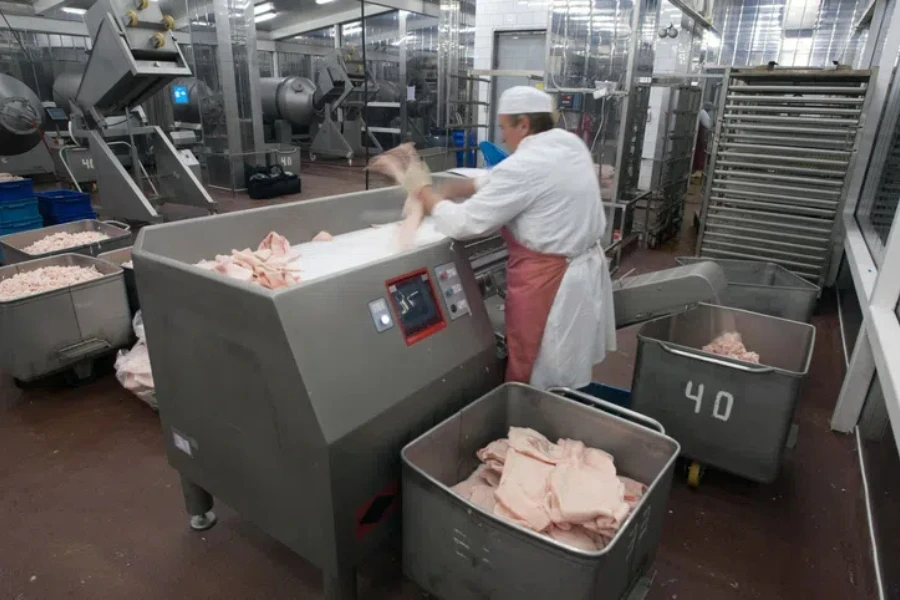
The latest advancements in commercial meat grinders have introduced innovative features that enhance performance, efficiency, and versatility.
Advanced Grinding Technology
Modern meat grinders are equipped with advanced grinding technology, such as precision-engineered gears and high-torque motors. These features ensure consistent and efficient grinding, even with tough cuts of meat. High-torque motors can handle larger volumes of meat without overheating, making them ideal for high-demand settings.
Digital Controls and Automation
Digital controls and automation have revolutionized meat grinding operations. Some grinders come with programmable settings that allow users to select specific grinding speeds and modes. Automatic shutoff features enhance safety by preventing the grinder from overheating or operating without supervision.
Versatile Attachments and Accessories
Versatile attachments and accessories expand the functionality of meat grinders. For example, some grinders come with sausage stuffing tubes, vegetable slicers, and cheese graters, allowing businesses to perform multiple tasks with a single machine. These attachments enhance the versatility of the grinder and reduce the need for additional equipment.
Energy Efficiency
Energy efficiency is a key consideration for modern commercial meat grinders. Energy-efficient models consume less power while maintaining high performance, reducing operational costs and environmental impact. Look for grinders with energy-efficient motors and components to optimize energy usage.
Regulatory Compliance and Certifications
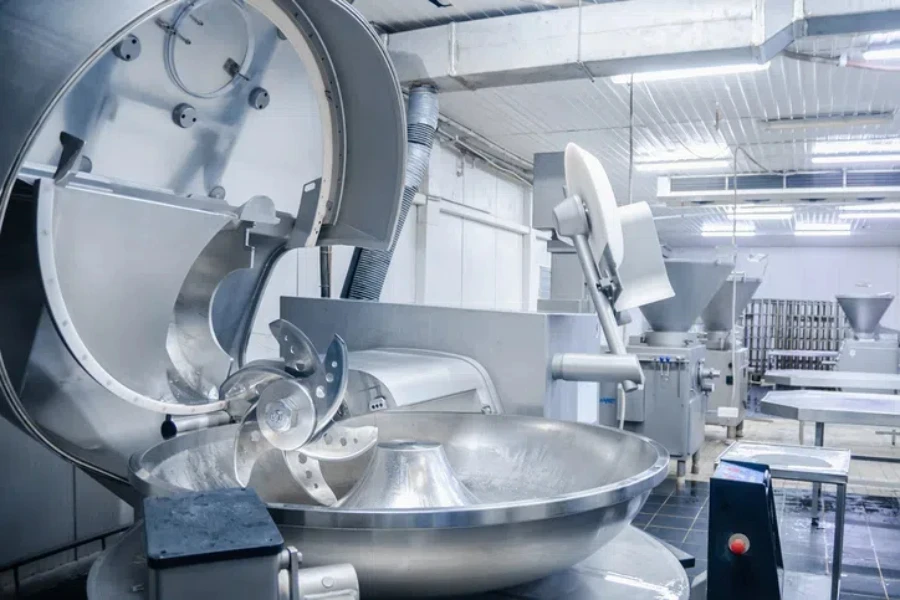
Compliance with regulatory standards and certifications is essential for commercial meat grinders to ensure safety, quality, and legal compliance.
NSF Certification
NSF certification ensures that the meat grinder meets strict food safety and sanitation standards. NSF-certified grinders are designed for easy cleaning and sanitation, reducing the risk of contamination and ensuring food safety in commercial kitchens.
UL Certification
UL certification indicates that the meat grinder meets safety standards for electrical appliances. UL-certified grinders undergo rigorous testing to ensure they operate safely and reliably, reducing the risk of electrical hazards and ensuring safe operation.
FDA Compliance
Compliance with FDA regulations ensures that the meat grinder is made from materials that are safe for food contact. FDA-compliant grinders are constructed from food-grade materials, ensuring that they do not leach harmful substances into the meat.
Conclusion
In conclusion, selecting the right commercial meat grinder involves considering various factors such as power source, types, sizes, technical specifications, ease of use, and maintenance. The latest advancements in meat grinder technology have introduced innovative features that enhance performance and efficiency. Regulatory compliance and certifications ensure that the grinder meets safety and quality standards. By carefully evaluating these factors, businesses can choose a meat grinder that meets their specific needs and enhances their meat processing operations.
